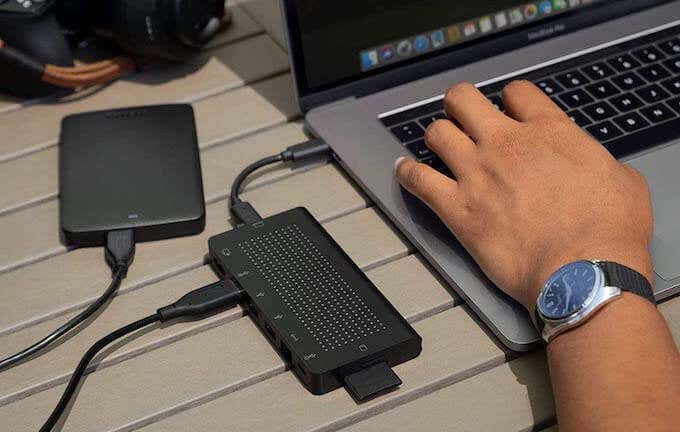
- #MAC AIRBOOK DOCKING STATION MAC OS#
- #MAC AIRBOOK DOCKING STATION DRIVERS#
- #MAC AIRBOOK DOCKING STATION PRO#
- #MAC AIRBOOK DOCKING STATION PLUS#
Thunderbolt 3 host cable & USB-C to DisplayPort cable for 2nd DP monitor extended dual display support on MacBook Pro/Air with Intel processor & single display with Apple M1 Chip
#MAC AIRBOOK DOCKING STATION DRIVERS#
#MAC AIRBOOK DOCKING STATION PRO#

But only Windows system support MST, Mac does not support. For Collage Mode, our hub support triple display: one of HDMI output, one of HDMI+DP and one of laptop.
#MAC AIRBOOK DOCKING STATION MAC OS#
#MAC AIRBOOK DOCKING STATION PLUS#
The front of the dock includes one Type-A USB 3.1 Gen 1 port and one USB-C 3.1 Gen 2 port each, plus a 3.5mm analog audio jack (with headset support) and dedicated SD and microSD Card slots, which support SD Express, for a maximum transfer speed of 985 MB/s. The 14-port Thunderbolt 3 dock, released this week, provides 85W of power for charging, and includes one mini DisplayPort (mDP) connector, two Thunderbolt 3 ports, a gigabit Ethernet adapter, optical audio (S/PDIF) connector, and four Type-A (full size) USB 3.1 Gen 1 ports on the back of the dock for connecting monitors, disks, and other peripherals intended to live on your desk. SEE: macOS Mojave: A guide for IT leaders (Tech Pro Research)

Luckily, the extensibility of Thunderbolt 3 via USB-C, and the practical engineering of Other World Computing (OWC)-a company with decades of experience in bridging the gap for Apple ecosystem adherents-has produced the OWC Thunderbolt 3 Dock, which allows users to connect peripherals and power their MacBooks by plugging in just one cable. Since then, Ive's minimalist influences have led to design decisions-most controversially, moving exclusively to USB-C on MacBooks-which have frustrated enterprise users who rely on a heterogenous array of ports, forcing people to live the #DongleLife.

Apple has always been ahead of the curve when it comes to deprecating legacy technologies, starting with the noteworthy absence of the head-turning Bondi Blue iMac G3 in 1998, under the direction of Sir Jonathan Ive.


 0 kommentar(er)
0 kommentar(er)
